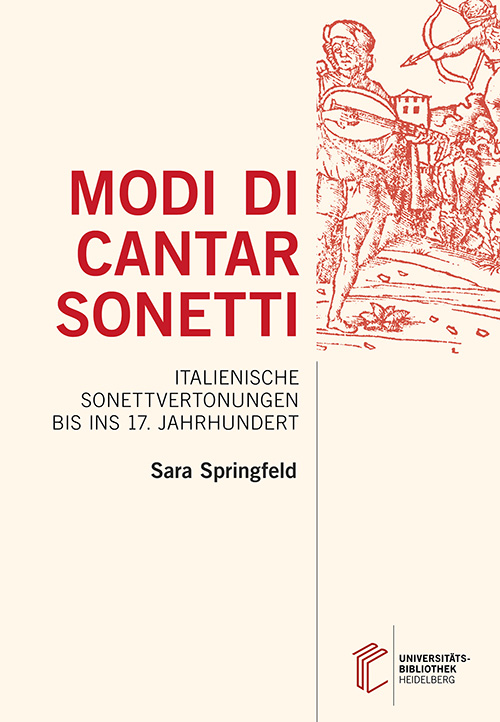
How to Cite
Springfeld, Sara: Modi di cantar sonetti: Italienische Sonettvertonungen bis ins 17. Jahrhundert, Heidelberg: heiBOOKS, 2018. https://doi.org/10.11588/heibooks.421
License

This work is licensed under a Creative Commons Attribution-ShareAlike 4.0 International License.
Identifiers
ISBN 978-3-946531-92-0 (PDF)
ISBN 978-3-946531-91-3 (Hardcover)
ISBN 978-3-946531-93-7 (Softcover)
Published
10/05/2018
Modi di cantar sonetti
Italienische Sonettvertonungen bis ins 17. Jahrhundert
The sonnet is considered one of the most enduring forms of European poetry. Throughout its almost 800-year history, it has not only challenged the artistic exploration and experimentation of poets, but also of composers. Whilst offering a range of creative possibilities for composers when setting a sonnet to music, they also faced problems when dealing with the asymmetrical stanza form of the text. This book concentrates on Italian sonnets from Francesco Petrarca to Giambattista Marino, which became popular text sources for the frottola, the madrigal and accompanied solo song in the sixteenth and seventeenth centuries.
Chapters
Table of Contents
Pages
PDF
2 Das italienische Sonett. Metrische Struktur und literarische Entwicklung bis ins 17. Jahrhundert
27-50
5 Das Primat der Form. Musikalische Deklamationsmodelle für Sonette im 16. und 17. Jahrhundert
83-114
6 Syntax und Semantik. Das Durchkomponieren als alternative Strategie der Sonettvertonung im mehrstimmigen Madrigal des 16. Jahrhunderts
115-199


